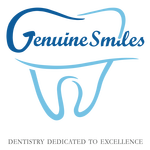
Tooth extraction
Tooth extraction is a dental procedure where a tooth that’s causing pain and problems gets removed from its place in the bone. While many people need the procedure, few know much about it. To learn the truth about tooth extraction, chew over this helpful guide.
There are a couple of different reasons why dentists prescribe this procedure. The most common is when a tooth is impacted, which stops it from growing in normally. This is often why many dentists recommend wisdom teeth removal. Another is the need to make room in the mouth for proper tooth alignment. And one more is when teeth are badly damaged and impossible to repair.
How do know if you need an extraction? Visit an affordable dentist for a simple dental exam that will show signs of possible problems. If the dentist suggests a tooth extraction, have the procedure as soon as you can. Postponing the extraction can cause pain, infection, and misalignment. And if your wisdom teeth are the trouble, the only way to avoid discomfort is wisdom teeth removal.
Next, your dentist will X-ray the area to determine the treatment you need. You’ll also be asked for your dental and medical history, along with a list of medications and allergies, to avoid any complications.
If the tooth is completely exposed, then your dentist will perform the procedure with a local anesthesia. But if the tooth has broken or not fully emerged, you’ll be referred to an oral surgeon for a surgical tooth extraction with a much stronger anesthesia. If you need to be given this deep anesthesia, carefully follow the surgeon’s instructions about eating and drinking before surgery. And arrange for someone to drive you home after the procedure.
Once the tooth extraction is over, expect to experience some swelling and pain. This swelling is completely normal and actually part of the healing process, but you can reduce it by placing ice packs on top of the swollen areas. If your jaw is stiff once the swelling subsides, use warm compresses to relieve the soreness.
Be aware that a surgical tooth extraction is more painful than a simple extraction. After all, there is much more involved in removing the tooth. You my be given pain medication for the few days after treatment, but the pain should diminish very soon after.
In the first few days after the surgery, you’ll need to be careful with how you treat the wound. Choose softer foods that are easy to chew and add firmer foods as you feel more comfortable. And don’t smoke or use a straw. With dental care, be extremely gentle when brushing near the area of extraction. Also, avoid strenuous exercise for a week after surgery to allow for proper healing.
Initial healing takes up to two weeks, but it typically takes three to six months for the bone and soft tissue to be fully restructured. And throughout the recovery process, be sure to follow your dentist’s directions to avoid any complications that could interfere with your healing and health.
